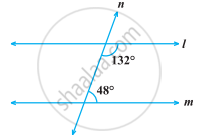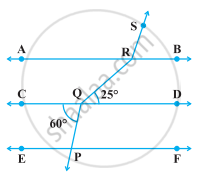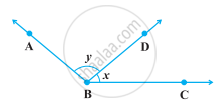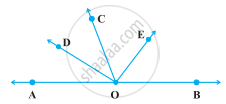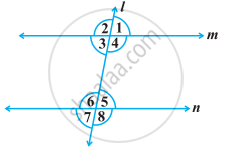Topics
Number Systems
Number Systems
Polynomials
Algebra
Coordinate Geometry
Linear Equations in Two Variables
Geometry
Coordinate Geometry
Introduction to Euclid’S Geometry
Mensuration
Statistics and Probability
Lines and Angles
- Introduction to Lines and Angles
- Basic Terms and Definitions
- Intersecting Lines and Non-intersecting Lines
- Introduction to Parallel Lines
- Pairs of Angles
- Parallel Lines and a Transversal
- Angle Sum Property of a Triangle
Triangles
- Concept of Triangles
- Congruence of Triangles
- Criteria for Congruence of Triangles
- Properties of a Triangle
- Some More Criteria for Congruence of Triangles
- Inequalities in a Triangle
Quadrilaterals
- Concept of Quadrilaterals
- Properties of a Quadrilateral
- Types of Quadrilaterals
- Another Condition for a Quadrilateral to Be a Parallelogram
- Theorem of Midpoints of Two Sides of a Triangle
- Property: The Opposite Sides of a Parallelogram Are of Equal Length.
- Theorem: A Diagonal of a Parallelogram Divides It into Two Congruent Triangles.
- Theorem : If Each Pair of Opposite Sides of a Quadrilateral is Equal, Then It is a Parallelogram.
- Property: The Opposite Angles of a Parallelogram Are of Equal Measure.
- Theorem: If in a Quadrilateral, Each Pair of Opposite Angles is Equal, Then It is a Parallelogram.
- Property: The diagonals of a parallelogram bisect each other. (at the point of their intersection)
- Theorem : If the Diagonals of a Quadrilateral Bisect Each Other, Then It is a Parallelogram
Circles
Areas - Heron’S Formula
Surface Areas and Volumes
Statistics
Algebraic Expressions
Algebraic Identities
Area
Constructions
- Introduction of Constructions
- Basic Constructions
- Some Constructions of Triangles
Probability
Notes
A line with two end points is called a line-segment and a part of a line with one end point is called a ray. Note that the line segment AB is denoted by `bar (AB)` . The ray AB is denoted by `vec (AB)` , and a linbe is denoted by `AB`. However, we will not use these symbols, and will denote the line segment AB, ray AB, length AB and line AB by the same symbol, AB.
If three or more points lie on the same line, they are called collinear points; otherwise they are called non-collinear points.
An angle is formed when two rays originate from the same end point. The rays making an angle are called the arms of the angle and the end point is called the vertex of the angle. There are different types of angles , such as acute angle, right angle, obtuse angle, straight angle and reflex angle in following fig. 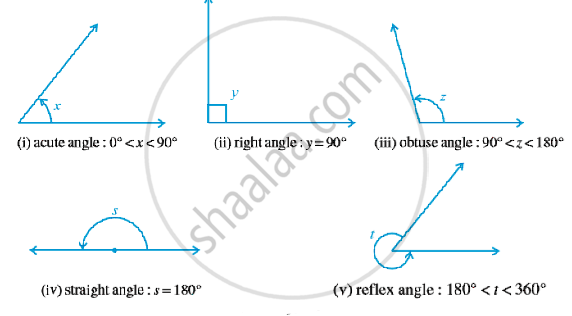
Further, two angles whose sum is 90° are called complementary angles, and two angles whose sum is 180° are called supplementary angles.
Two angles are adjacent, if they have a common vertex, a common arm and their non-common arms are on different sides of the common arm. In following fig.
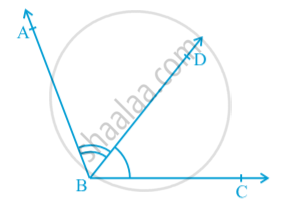
∠ ABD and ∠ DBC are adjacent angles. Ray BD is their common arm and point B is their common vertex. Ray BA and ray BC are non common arms. Moreover, when two angles are adjacent, then their sum is always equal to the angle formed by the two noncommon arms. So , ∠ ABC = ∠ ABD + ∠ DBC .
Note that ∠ ABC and ∠ ABD are not adjacent angles. Because their noncommon arms BD and BC lie on the same side of the common arm BA.
If the non-common arms BA and BC in following fig . 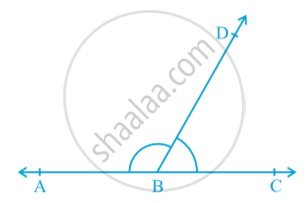
form a line then it will look like in above figure. In this case,
∠ ABD and ∠ DBC are called linear pair of angles.
The vertically opposite angles formed when two lines, say AB and CD, intersect each other, say at the point O in following fig.
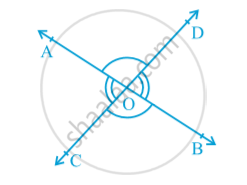
There are two pairs of vertically opposite angles. One pair is ∠AOD and ∠BOC.
